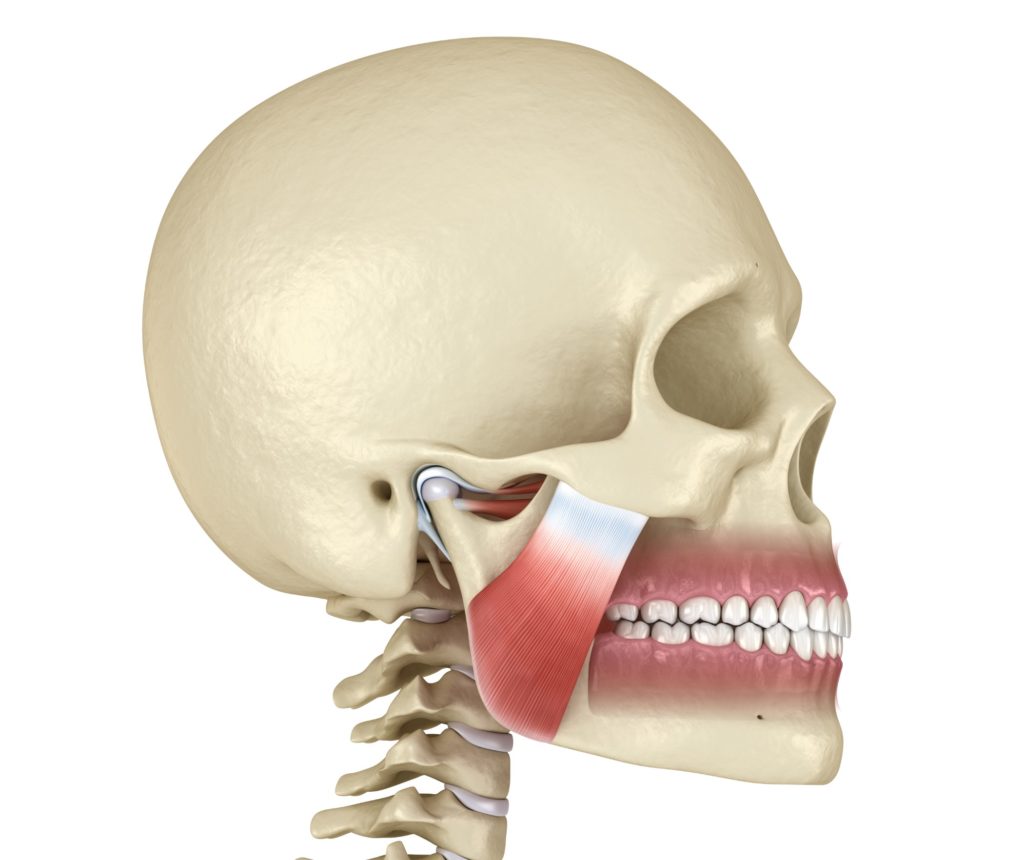The joint at the junction of the temporal bones with the lower jaw is called the
temporomandibular joint (TMJ). Two joints are on both sides of the skull in front of the
ears. The joints are mobile and work together to provide smooth jaw movements. However,
sometimes the muscles attached to the joint shift, which can lead to many problems. TMJ
disorder can be caused by many factors, such as dental, myogenic, joint, or anatomical
factors. To diagnose, the specialist will check your jaw joints for pain or tenderness and
listen for clicks when you move them. He will also see that the jaw works properly and doesn’t lock when opening or closing your mouth. He will also check for problems with
your facial muscles. The doctor may take a full X-Ray to evaluate your jaw and teeth. Other tests like magnetic resonance imaging (MRI) or computer tomography are also conducted.
The MRI can show if the TMJ is in the correct position.
The symptoms commonly associated with TMJ disorder include: difficulty in fully opening
the mouth, facial and jaw joint discomfort, discomfort in the neck and shoulders, as well as
the ears when speaking, chewing, or opening the mouth. The jaws may become stuck in
either the open or closed position, and clicking sounds may be heard when opening, closing,
or chewing. Fatigue in the facial muscles, difficulty in chewing, and facial swelling are also
potential symptoms. Additionally, individuals may experience toothaches, headaches, neck
aches, dizziness, earaches, shoulder pain, and tinnitus (a ringing or buzzing sensation in the
ears).
To obtain further details regarding the procedure as well as post-procedural care, please do not hesitate to get in touch with our team.

The joint at the junction of the temporal bones with the lower jaw is called the temporomandibular joint (TMJ). Two joints are on both sides of the skull in front of the ears. The joints are mobile and work together to provide smooth jaw movements. However, sometimes the muscles attached to the joint shift, which can lead to many problems. TMJ disorder can be caused by many factors, such as dental, myogenic, joint, or anatomical factors. To diagnose, the doctor will check your jaw joints for pain or tenderness and listen for clicks when you move them. He will also see that the jaw works properly and doesn’t lock when opening or closing your mouth. He will also check for problems with your facial muscles. The doctor may take a full X-Ray to evaluate your jaw and teeth. Other tests like magnetic resonance imaging (MRI) or computer tomography are also conducted. The MRI can show if the TMJ is in the correct position.

The common symptoms of TMJ disorder are
Difficulty in opening mouth wide
The ache in your face, jaw joint area, neck and shoulders, and ear when you chew, speak or open your mouth.
In the open or closed-mouth position, jaws get stuck.
When you open or close your mouth or chew, clicking sounds in the jaw joint.
Tiredness in the face.
Problem with chewing.
Swelling on the face.
You may also experience toothaches, headaches, neck aches, dizziness, earaches, shoulder pain, and tinnitus (ringing or buzzing in the ears).
Aftercare
Painkillers, like naproxen or ibuprofen, can relieve muscle pain and swelling. You should eat soft food. To avoid chewing, cut food into small pieces. Apply ice packs to the side of your face for around 10 minutes. Maintain good posture; this will help you reduce neck and facial pain. Do not open your mouth wide. Restrict extreme jaw movements. Practice stress reduction therapy, try to learn stress relaxation techniques to loosen up your jaw.

